Affiliate disclosure: This post may contain affiliate links. Please see our Privacy Policy.
Growing elderberries is an easy way to harvest this tasty medicinal berry from your own backyard. The plants are easy to grow and vigorous, and just about anyone can successfully grow elderberries at home.
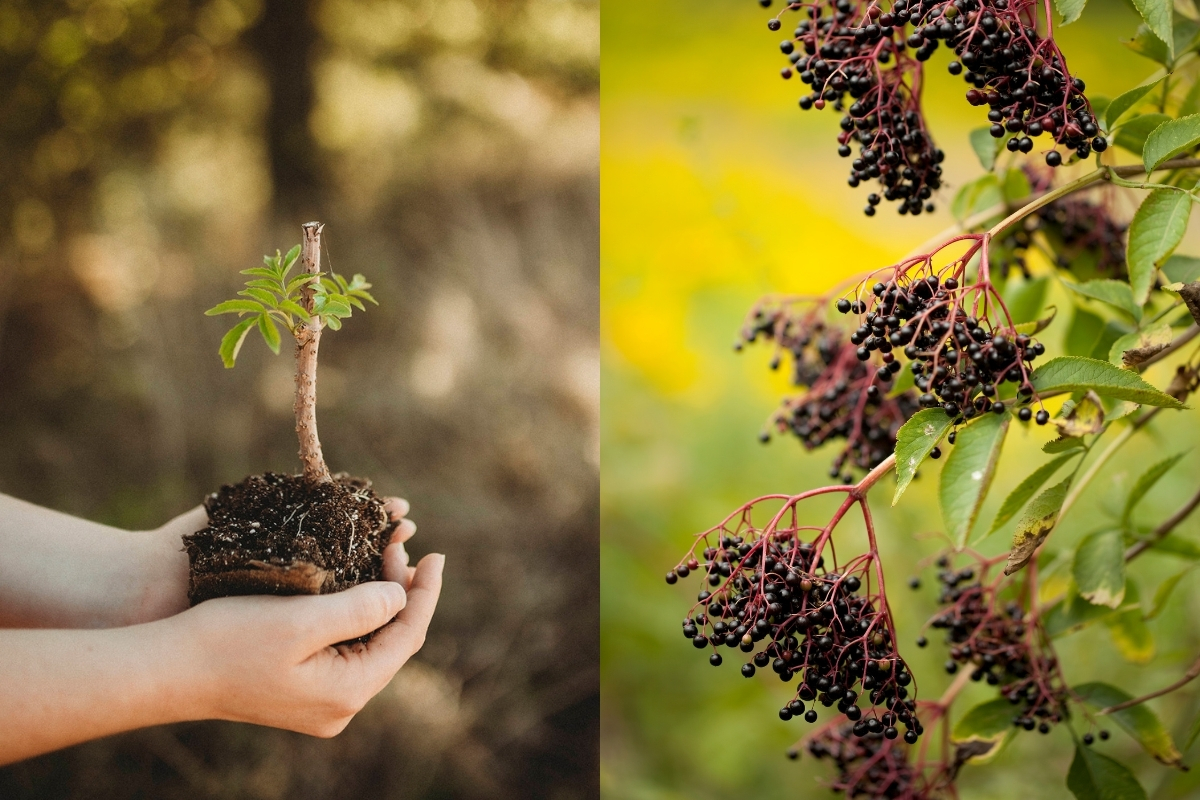
Elderberries are a common wild edible berry, easily spotted by their bright blooms in early summer, followed by huge clusters of small purple berries in the early autumn. The fact that elderberries readily grow in the wild means that they’re a good choice for beginning gardeners, and they’ll thrive even with neglect.
Though their delicious and make excellent pies and jellies, elderberries are better known for their medicinal properties. They’ve gained a lot of attention in recent years because new studies show that they can reduce the duration and severity of flu symptoms.
One study found that just a small amount of elderberry extract (tincture) caused the participants to recover from the flu 4 days earlier than people given a placebo. While they might not “cure” the flu, they seem to good a job of supporting a healthy immune system to help your body recover naturally.
With all that press, it’s no wonder why dried elderberries sell out every flu season. If you grow your own elderberries at home, you’ll always have plenty of elderberries for homemade remedies like elderberry syrup, plus enough to make a few fresh elderberry pies in season.
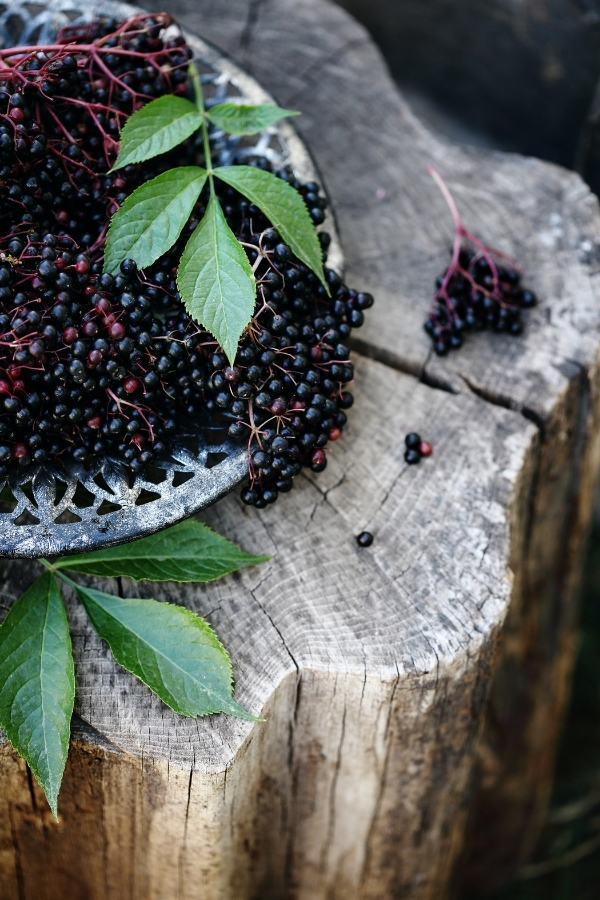
How to Grow Elderberries
Growing elderberries starts with finding elderberry plants or cuttings.
By far the most economical way to propagate elderberries is from cuttings, and cuttings taken during the dormant season (winter) root easily with rooting hormone.
Start by taking a 6 to 8-inch cutting from a live elderberry plant in sometime January through March. Dip the end in rooting hormone and place it in potting soil. Put the pot in a protected (but unheated) space to mimic early spring conditions and keep the soil moist.
In a few weeks, the cutting should be rooted and you have a new elderberry plant.
Take cuttings from a friend or neighbor, or lacking that, you can order cuttings online for just a few dollars. They’re only available for order in January for February shipment, so if you’ve missed it, ordering elderberry plants instead.
Elderberry plants are usually rooted from cuttings and grown out a bit to be strong and vigorous plants. Since elderberries are quick-growing shrubs, a 6” rooted cutting will grow several feet in the first year, so there’s no need to spend $50 on a big nursery potted elderberry shrub.
Rooted elderberry cuttings or starts are available anytime, but ship February through April. Rooted cuttings are a more dependable way to grow elderberries since they take the guesswork out of propagating elderberries and they’re meticulously tended in sheltered greenhouse conditions.
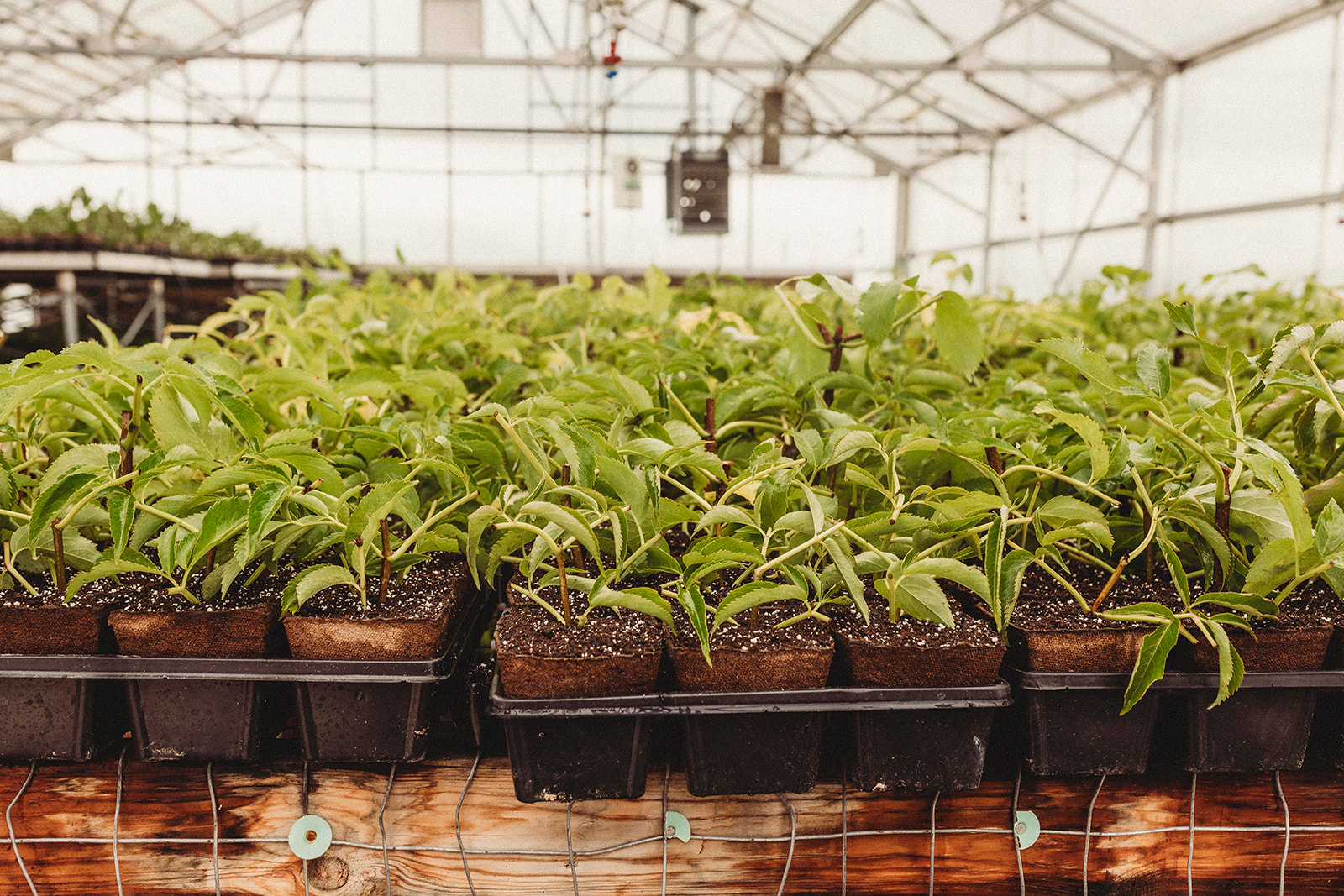
Elderberry Varieties & Pollination
Most elderberry varieties are reasonably similar flavor-wise, and only die-hard elderberry growers can tell them apart. The fruit is mildly sweet and full of deep purple antioxidant goodness.
Varieties are important though, as elderberries require cross-pollination. A single lone plant won’t bear fruit, and you must plant two similar varieties within about 100 feet of each other to ensure pollination. (Close is better.)
Common elderberry varieties include:
- York ~ Grows about 6 to 8 feet tall and is one of the best varieties for high-quality juice. Ripens in late August.
- Adams ~ A common pollinator variety, Adams bears large berries and heavy yields as well. Ripens in early September.
- Bob Gordon ~ Very hardy and one of the most drought-tolerant elderberry varieties. Bushy growth habit, that stays smaller than some varieties (5 to 8 feet). Ripens in earlier than other varieties in July and August.
- Nova ~ A partially self-fruitful elderberry variety that will set fruit alone, but still produces better crops with a pollinator. Grows about 6 to 8 feet tall. Ripens in early August.
Elderberries are insect-pollinated, and a particular favorite of native bumblebees.
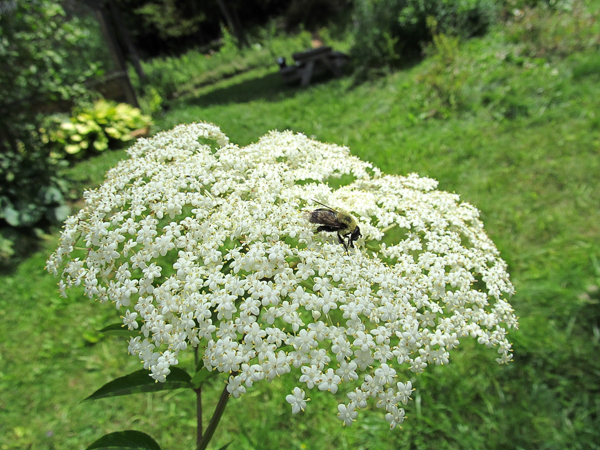
Elderberry Growing Zones
Elderberries can be grown in most of the US, with the exception of the hottest, dryest parts of the country out west. They’re hardy in USDA zones 3 to 8, which means they can survive winter temperatures down -40 F!
In zone 8, the minimum winter temperature is usually around 15 to 20 degrees F, which is still a good bit below freezing. They don’t fare well with winters that consistently stay above freezing (zones 9 and 10).
Where to Plant Elderberries
Believe it or not, the main consideration when growing elderberries is propper site selection. Plant elderberries in the right spot and they’ll produce for decades without fertilizer or maintenance. Choose the wrong spot, and your plants will be stunted. They may not actually die, but you’ll harvest no more than a few clusters of berries per year.
Elderberries like moist fertile soil and the one thing they really can’t handle is drought. While they don’t exactly want standing water, they do want soil that stays consistently moist throughout the growing season.
In the wild, they’re commonly found growing along (but not in) drainage ditches, streams, and ponds. Areas that keep the soil consistently moist, without actually suffocating (and thus rotting out) their roots.
Amend with plenty of organic matter to help improve the water holding capacity of the soil, and be sure to provide 1 to 2 inches of water per week unless there’s a steady supply of rain.
Given a choice, elderberries do better in cooler sites with partial shade to full sun. Generally, elderberries are spread by birds, so they tend to crop up on the edges of woodlands right below where birds roost.
Giving them a bit of protection from the intense mid-day sun will actually help them grow better.
How to Plant Elderberries
Elderberries are usually planted in the spring or early summer. Be sure to choose an appropriate location with rich soil that stays consistently moist (but not soggy). As I’ve mentioned, site selection is critical to success with growing elderberries.
Prepare the planting hole by adding compost or other organic matter, and then carefully plant your rooted elderberry cuttings or young plants.
Space plants 4 to 6 feet apart and allow them plenty of space to grow. Some varieties grow as tall as 12 feet, but most of the modern cultivars are bush varieties that stay 5 to 8 feet in height.
They appreciate cooler soil with protection from the intense noonday sun, and partial shade is just fine, but full shade will prevent fruit set. Be sure that they get at least 6 to 8 hours of direct sunlight in the summer months for good fruit production.
Soil moisture is essential, especially in the first year, so don’t allow the soil to dry out. Avoid sandy soils, and if that’s all you have available be sure to amend with a lot of compost and mulch heavily.
Provide 1 to 2 inches of water a week during the growing season, and watch your little elderberry baby grow!
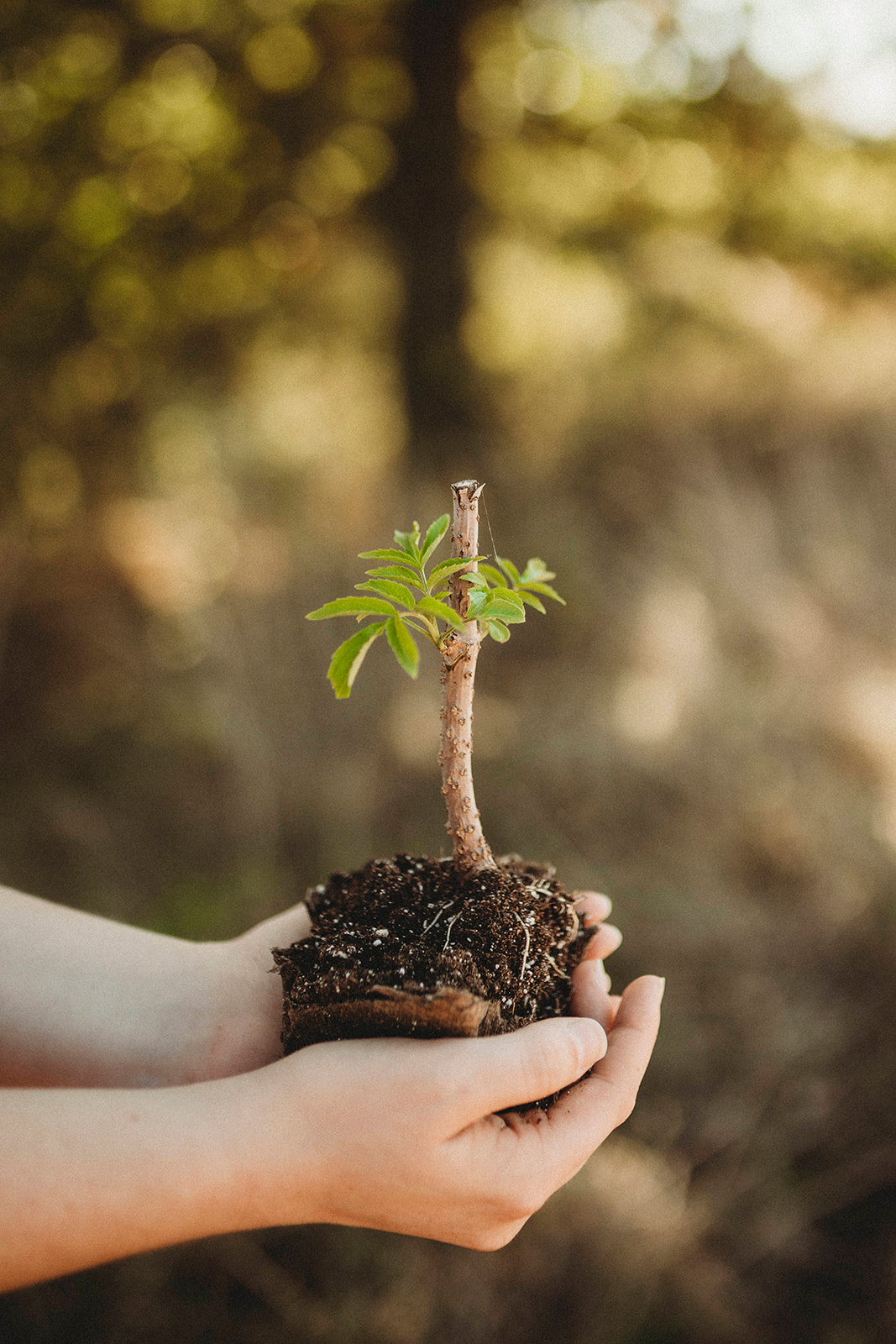
Elderberry Plant Care
Once elderberries are established, they’re pretty low maintenance. Be sure to prune back old dead branches to keep the patch open, help prevent fungal diseases and discourage boring insects.
Water regularly unless you get 1 to 2 inches of water per week.
Adding a few inches of compost or well-rotted manure each year will help keep the plants healthy and productive, and mulching with bark mulch or leaves helps maintain soil moisture.
Be aware that mature elderberry plants can grow as tall as 10 to 12 feet without pruning, and about 6 feet wide, so be sure to give them plenty of space to spread.
That said, most modern varieties only grow 5 to 8 feet tall. They can also be kept a good bit smaller with pruning, and the fruit comes from lateral branches, so keeping them smaller doesn’t prevent good harvests.
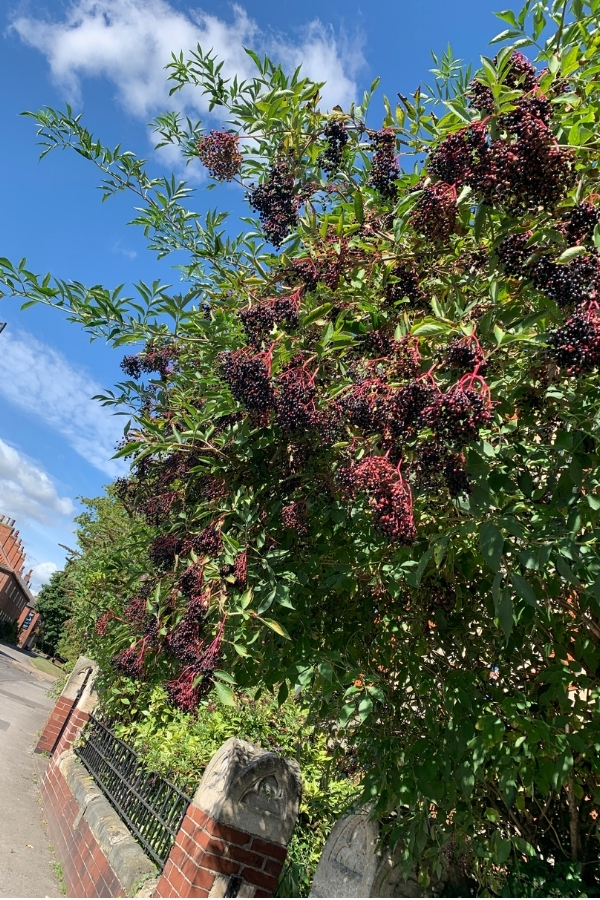
Harvesting Elderberries
Elderberries produce fruit in August and September, depending on the variety. The fruits are quite small but born in large clusters.
Harvest whole clusters with scissors or pruners to avoid damaging the soft fruit. Fresh elderberries don’t keep well at room temperature, so be sure to refrigerate them soon after harvest (and use them quickly).
Elderberries can also be frozen, and that makes them much easier to remove from their stems. Freeze whole clusters overnight (or for months at a time) and then use a comb or brush to pull the individual frozen elderberries from their stems.
A mature 3 to 5-year-old elderberry plant can yield around 15 to 20 pounds of elderberries per year, and since you’ll need at least two for pollination, expect to harvest elderberries by the bucketful.
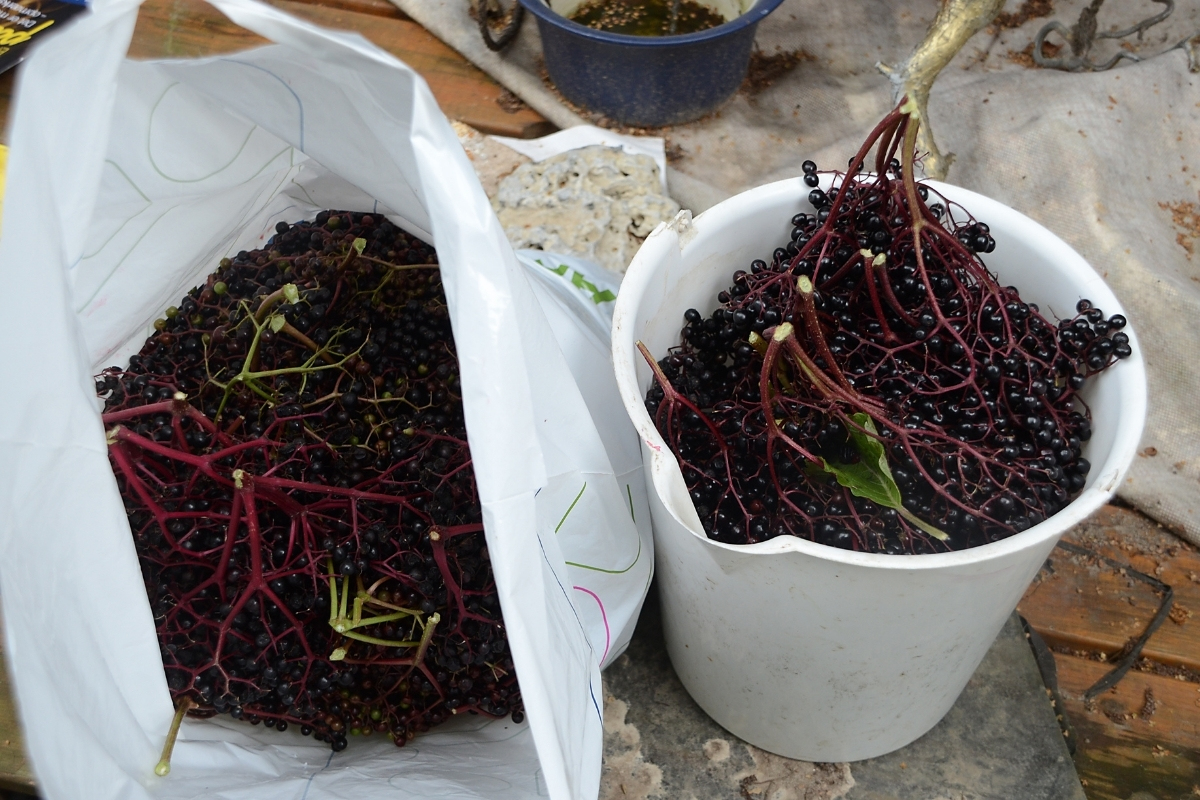
How long does it take elderberries to bear fruit?
Large elderberry plants purchased in 2 to 5-gallon pots from local nurseries can fruit the same year their planted, producing at least a few fruit clusters. Those giant plants can be expensive though, and sometimes run $50 to $80 each!
Elderberries grow fast, and there’s no need to spend a lot of money on large plants. Even the smallest rooted cuttings (only 6” tall) will bear fruit in 2-3 years after planting. You should expect your first large crops 3 to 5 years after planting, in ideal conditions.
Still, that won’t help you if you want to make elderberry remedies this year. In the short term, you’re better off purchasing ready-made elderberry remedies to have on hand for flu season at least until your homegrown elderberry shrubs mature.
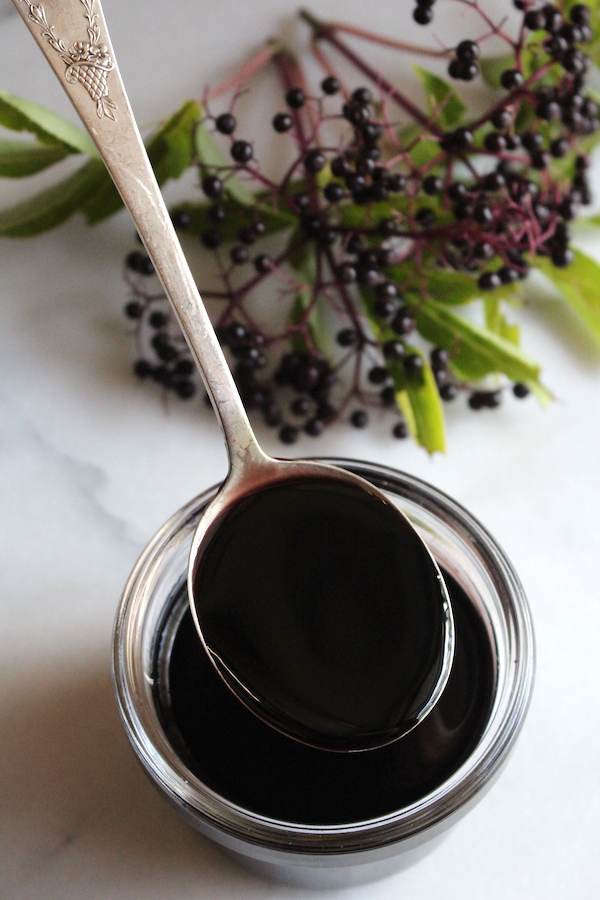
Elderberry Recipes
Once you have a crop of homegrown elderberries, there are so many tasty ways to use elderberries!
- Small Batch Elderberry Mead ~ Practical Self Reliance
- Fermented Elderberry Soda with Ginger and Honey (Made with Wild Yeast) ~ Grow, Forage, Cook, Ferment
- Immune Boosting Elderberry Oxymel ~ Practical Self Reliance
- Elderberry Pie ~ Adamant Kitchen
- Elderberry Jelly Recipe For Canning ~ Practical Self Reliance
- Soothing Cooling Elderberry Lollipops for Kids & Adults ~ Nitty Gritty Life
- Herbal Immunity Tea For Winter Immune Support ~ Practical Self Reliance
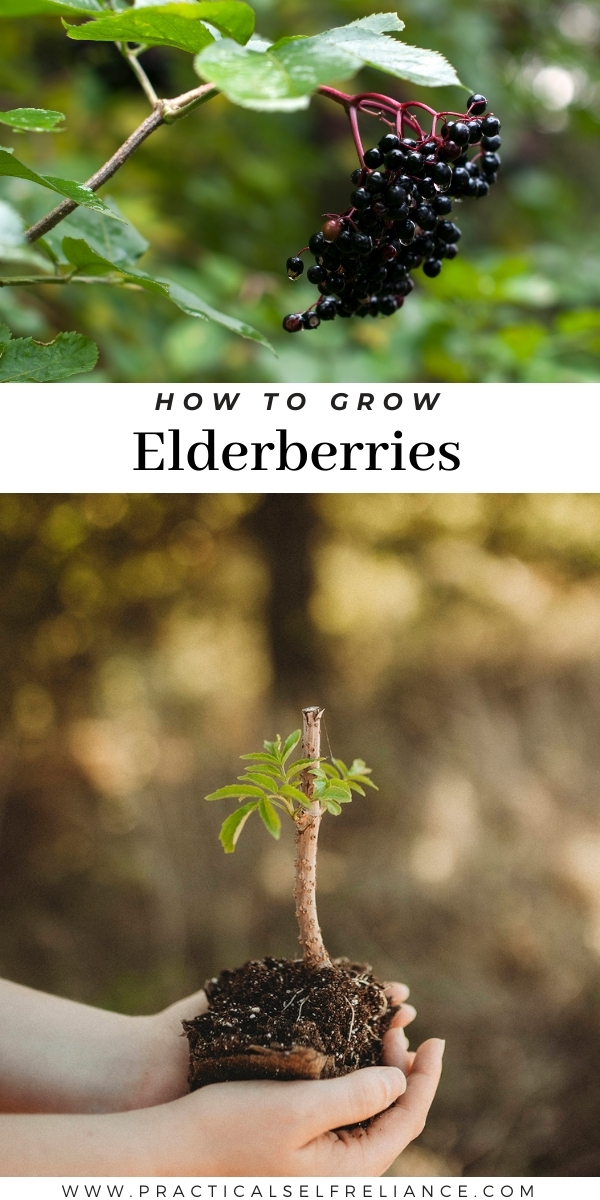
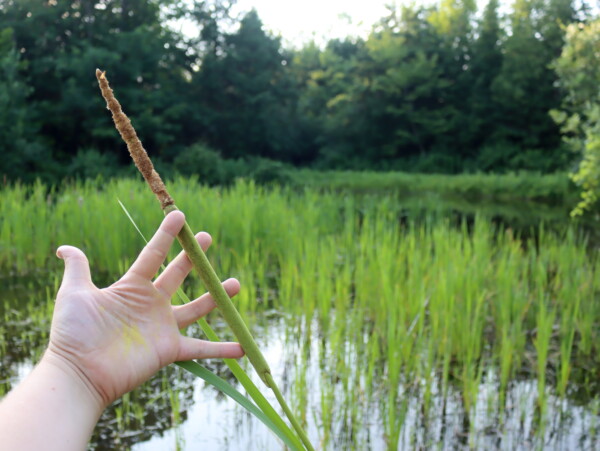
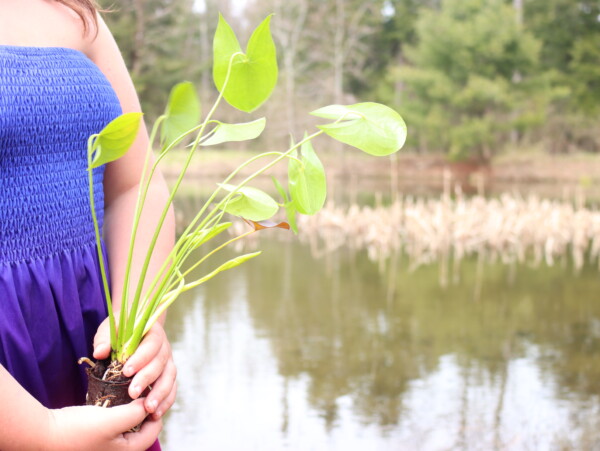
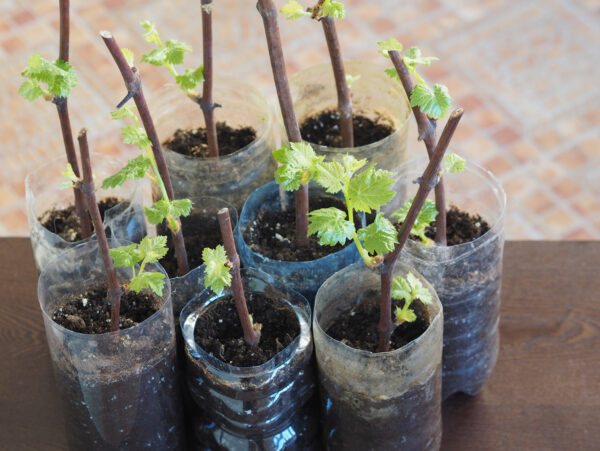
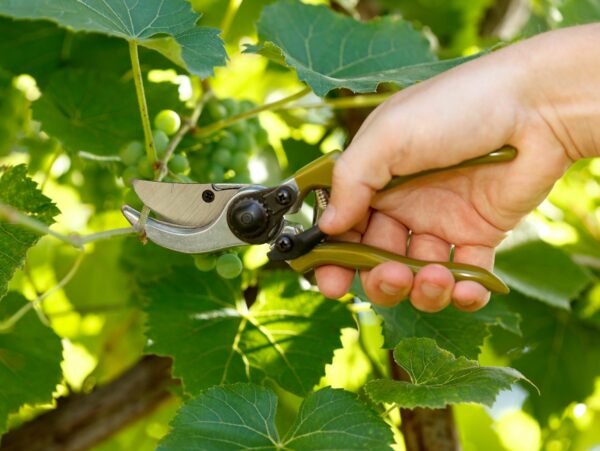










I bought my first elderberry plant last summer. It was a bad drought year but I tried to keep it well watered. It didn’t do great that summer, but this summer it got many long thin floppy shoots all over it and it’s now about 6-8 ft wide and 4 feet tall. It’s in a good location I think. Sunny with some shade, and good soil. I live in zone 4. However, I haven’t had any berries yet. Do I need to just wait another year or two, or get a second elderberry plant? Thank you!
Carole Knudsen
Did you get any flowers at all?
I love in zone 9b. Wild elderberries grow profusely here. Don’t count out warmer zones!
That’s good to know. Thanks for sharing.
I planted a couple elderberry bushes last year of the purple variety. I am excited to harvest them. I also have some wild red variety of elderberries that have popped up thanks to the birds. Just wondering about opinions on the red fruit’s use. It seems a little bit controversial when I look it up.
Everything I have ever read states that the red are toxic. I prefer to err on the side of caution and stick with the black or blue.
Hi Ashley…
I want to start an elderberry patch but, have a couple of “total newbie” questions…
**BIRDS…how much ‘competition’ do the birds present..? Do the bushes need to be protected from birds so there’s plenty of fruit for us to harvest (like chicken-wire…lets pollinators in but, not many birds)…? It may not even be an issue but…if the birds are planting them, they’re eating them to some degree.
**PRUNING…other than removing the dead stuff periodically, do they need to be pruned at all or cut down to the ground at the end of fall..? I’m hoping they kind of take care of themselves for the most part.
Thanks!! Have a great day!! : )
You will definitely want to protect them from the birds. I have a wild bush growing on my property and I can never seem to get to them before the birds. This year I planted some in my yard so that I can easily cover them when the time comes. A net should work great. You can just wait until right before the berries start to ripen to put the net on. By that point, the flowers should be mostly gone and you won’t have to worry about the pollinators. You want to prune off any old, dead branches but any additional pruning beyond that isn’t necessary. You can prune them to shape them up though if you prefer for them to be more compact.
Wondering about pruning or cane management. Do they just fruit on 2yr old canes? How often do you prune the canes back to ground level?
They fruit on side branches off the main shoots that develop in the 2nd and 3rd year. They’re not like raspberries that have biennial canes, they’re really perennial bushes more like blueberries. When a branch dies back completely, trim it off, as you would a blueberry, but there’s not a specific time when you need to prune them back to the ground as there is for Autumn fruiting raspberries or dead summer raspberries after the second year.